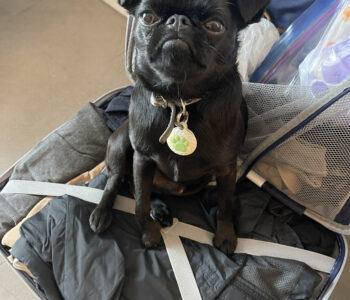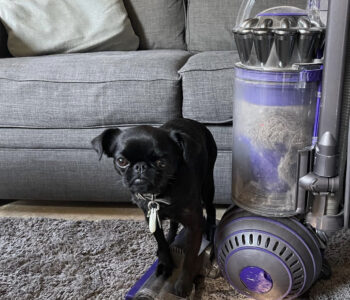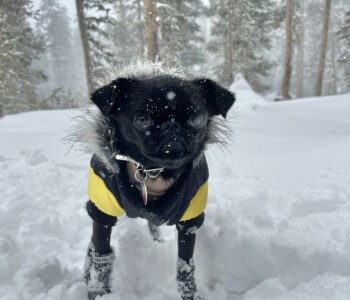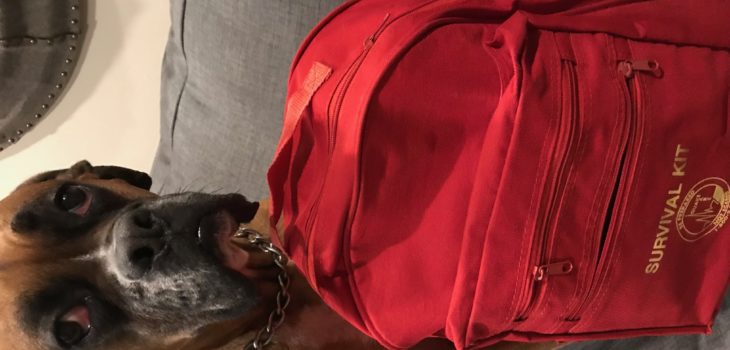 Blog
Blog
Disaster Preparedness for your Pets
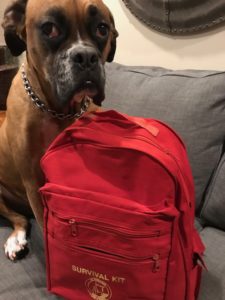 Unfortunately natural disasters like hurricanes, tornadoes, earthquakes, and wild fires are an inevitable part of life. Though we cannot prevent them, we are not completely helpless. We can improve our chances for a safe outcome by becoming better prepared for these natural disasters.
Unfortunately natural disasters like hurricanes, tornadoes, earthquakes, and wild fires are an inevitable part of life. Though we cannot prevent them, we are not completely helpless. We can improve our chances for a safe outcome by becoming better prepared for these natural disasters.
When disasters strike, they leave no time for blunders. People forced to evacuate have little time to pack. Being ready at a moments notice is critical and having a disaster kit for you and your pets is essential.
Preparing for an emergency begins by making a disaster kit for your family and your pets. However, preparing your pets for a disaster begins even before you pack your first supply in your disaster kit. Your pet should already have a microchip implanted, and wear a collar with identification tags. Taking these precautions can avoid the heartache of a lost pet during these times of chaos. Even with the best precautions your pet can get lost in the turmoil. Having a microchip and ID tag will help reunite you with your lost pet.
As previously mentioned, pets should have their own disaster kit. These kits need to contain all the supplies your pet will need to survive for several days. Pre-made pet disaster kits can be purchased online or you can make your own.
What do you need to make your own grab-n-go kit?
1. A container to store all the supplies.
A duffel bag or backpack is ideal because they are easy to carry in case you need to evacuate. You should choose a brightly colored one because they will be easy to identify and find, even in the darkness of a power outage. Likewise, you should store your disaster kits in a location where they are easily accessible. Storing your emergency kit where you cannot find it or easily get to it negates its usefulness.
2. Food and water
You will need to include enough food in your kit to last for several days. Canned foods last longer than dry foods so these are a good choice for our pack. However, they are heavy and the amount of cans needed to sustain a large dog for several days is probably too bulky and impractical to pack in a disaster kit. Dry food can be packed instead but be sure to pack it in heavy-duty waterproof freezer bags. Be sure you include bowls as well as a can opener (if using canned food). I prefer to use collapsible bowls, because they are light, and collapse to less than two inches so they don’t take up a lot of space. You should have enough water for your pet in their disaster kit, since it may be hard to carry days worth of water consider including a water-purifying filter or iodine tablets.
3. Toys & Treats
Although it may not seem necessary, you should also include your pet’s favorite treats and toys in your disaster kit. Many frightened animals will hide during a disaster and will not want to come out of their hiding place. Along with gentle coaxing, having your pet’s favorite toy on hand may be what you need to entice your fearful pet out of hiding and into safety. Toys also come in handy if you need something to entertain your pet while you are waiting out the storm.
4. Leash and/or Pet Carrier
Be sure to include a leash (preferably one that is reflective) for dogs or a pet carrier for cats or small to medium sized dogs so that you can safely secure and transport your pet without risking that they will run away and get lost. SHERPA®’s Elevation Carrier doubles as a carrier + backpack, making it easy to grab your pets and go! You can even pre-pack and store disaster kit supplies in this backpack carrier knowing you’ll have a carrier ready for your small pet when you need it.
Be sure to store your disaster kit and carriers in a location where they are readily accessible. Storing these where you cannot find them or easily get to them negates their usefulness.
5. Medications
Be sure to include any medications that your pet is currently taking, such as arthritis, thyroid and blood pressure medications. You may not be able to go to your veterinarian during an emergency so have extra supplies available.
6. First aid kit
Include a pet first aid booklet and first aid supplies in case your pet gets injured and you cannot access a veterinarian. First aid kits should include antibacterial ointments, bandaging material, wound dressing, and antiseptic wound cleaners. Also pack a thermal blanket to keep your pet warm if it goes into shock. Finally, you can improve your first aid skills by enrolling in a basic pet first aid class often offered at your local animal shelter.
7. Important documents
Pack a copy of your pet’s important medical records, including vaccination history and microchip information. Include a recent photo of your pet and your adoption papers to show you are the owner. I also recommend including a document that has emergency contact information, your veterinarian’s number and any local boarding facilities so you have access to these important numbers.
Having taken the proper measures to prepare for an emergency, you have given yourself and your family the best chance for a safe outcome.
So what do you do during a disaster?
First and foremost, try to remain calm. Then put your plan of action into motion. Get your disaster kits, locate your animals, secure them using either a leash for dogs or a carrier for cats and small dogs, and then get yourself, your family, and your pets to a safe location. Remember take your pets with you! If you have a pet emergency don’t call 911 they do not handle pet emergencies. Instead call your veterinarian, the local veterinary emergency clinic or the local animal shelters. If your pets manage to get lost or you need a place for your pets, contact your local animal shelters for information.
While the area you live in may not be prone to Hurricanes or earthquakes disasters come in all forms. Natural disasters cannot be prevented, but being organized and preparing for them can make a lifesaving difference.


